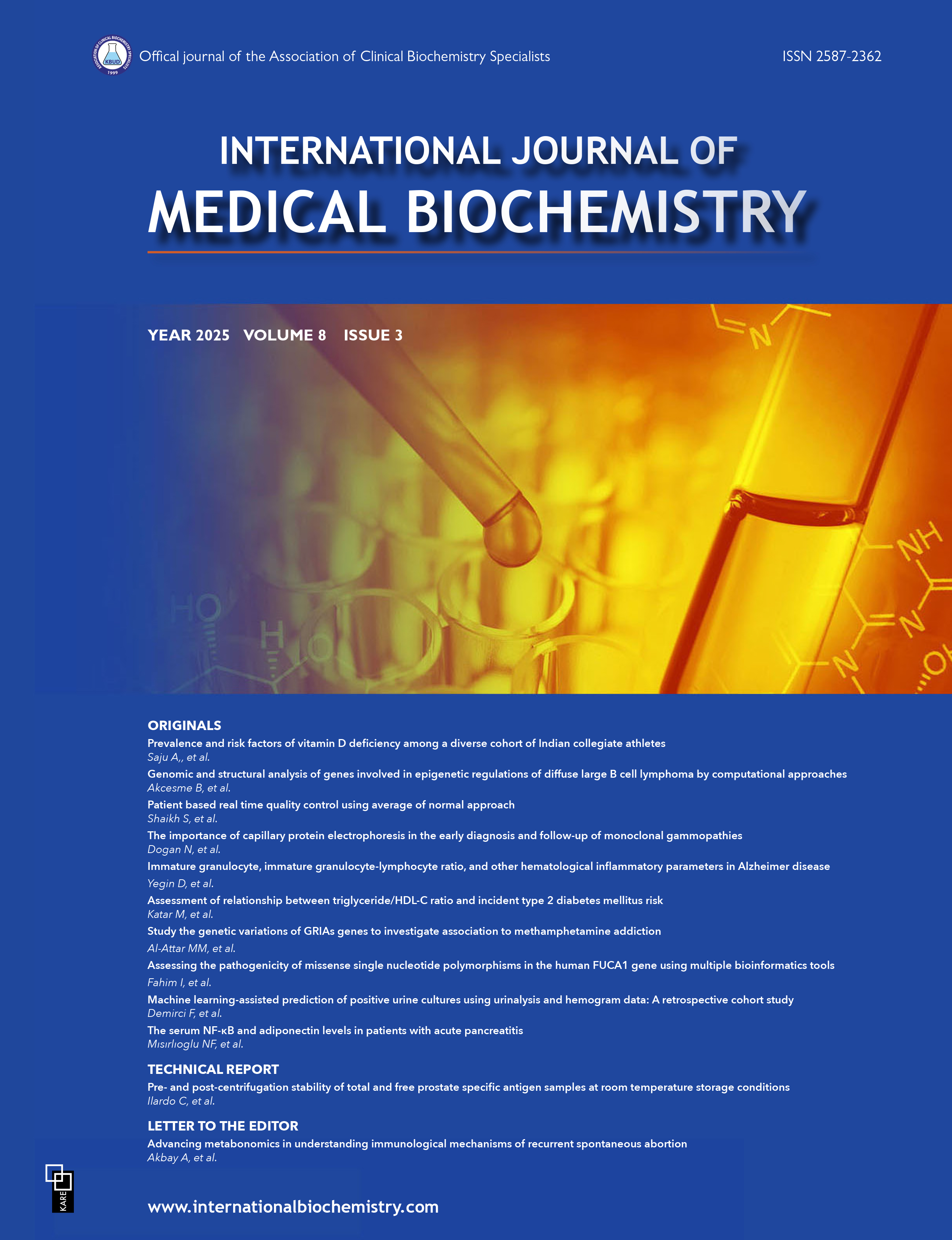Patient based real time quality control using average of normal approach
Sarvatnida Shaikh1, Shilpa Jain2, Sarika Baku31Department of Biochemistry, Dharmsinh Desai University, Dr. N.D. Desai Faculty of Medical Science and Research, Nadiad, India2Department of Biochemistry, All India Institute of Medical Sciences (AIIMS), Bhatinda, India
3Department of Biochemistry, GMERS Medical College, Junagadh, India
INTRODUCTION: The limitation of internal quality control (IQC) based on daily running of commercially available QC material is that it is non-commutable and errors cannot be detected in between the scheduled runs. This study was carried out with the objective of finding the utility of patient based real time quality control (PBRTQC) in overcoming these limitations.
METHODS: This observational descriptive study was carried out in the clinical chemistry laboratory of a tertiary care hospital between July 2023 to December 2023. PBRTQC was initiated in the laboratory by using Average of Normal (AoN) approach for serum sodium and potassium. Patients sample-based reference mean (RPM) and standard deviation (RPSD) were calculated from the previous six months data using reference intervals as truncation limits. For the next 2000 samples, the mean was calculated for each block of 20 samples (x̄) and designated as x̄1, x̄2, x̄3... These block means were plotted on the LJ chart and alarms were raised on the violation of predefined control rules. These alarms were investigated and necessary corrective measures were implied in the laboratory.
RESULTS: RPM±RPSD for sodium was 139.23±3.72 mEq/L and potassium was 4.26±0.45 mEq/L. The scheduled IQC was within range during the study. Alarms were raised for x̄13, x̄28, x̄29, x̄30, x̄35, x̄36, x̄55, x̄74 and x̄96. The workup of these alarms revealed instrument calibration error in most of the cases. However, analysis of x̄35 and x̄36 revealed delayed transport, improper temperature maintenance and partial hemolysis. All responsible personnel were given training regarding sample transport procedure. Using real time monitoring, we were able to detect errors which would have otherwise gone unnoticed by conventional IQC.
DISCUSSION AND CONCLUSION: PBRTQC permits stringent quality control in analytical as well as preanalytical phase of testing procedure, even during the intervals between scheduled IQC runs. Successful implementation of PBRTQC will provide additional confidence in reporting laboratory results.
Manuscript Language: English






